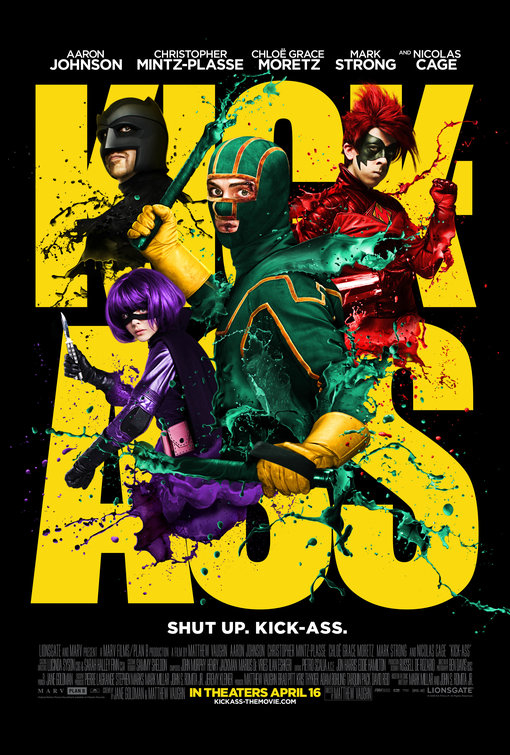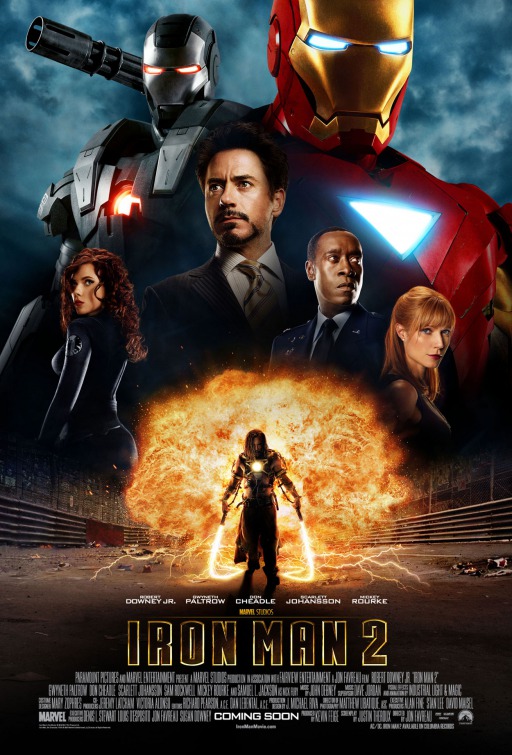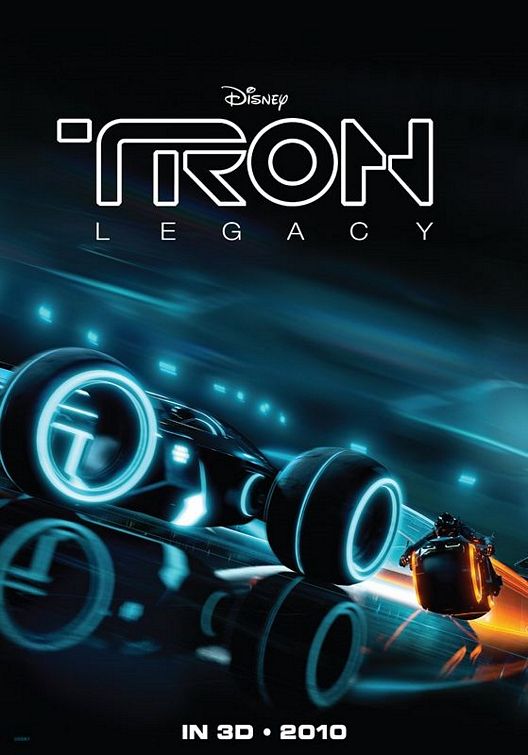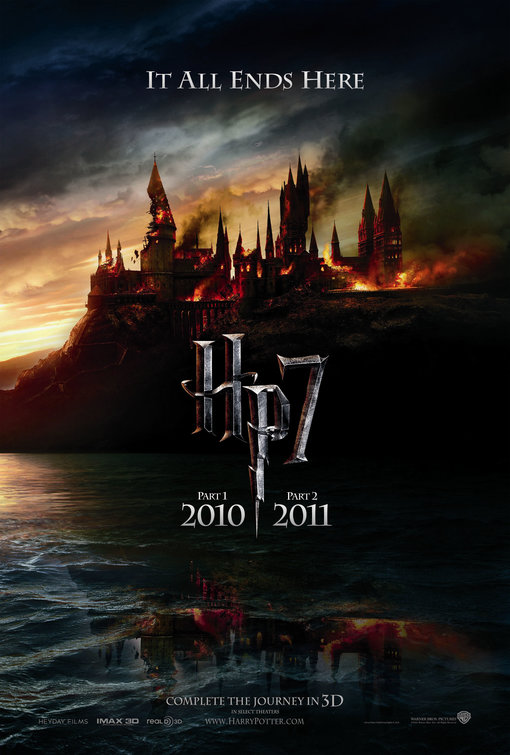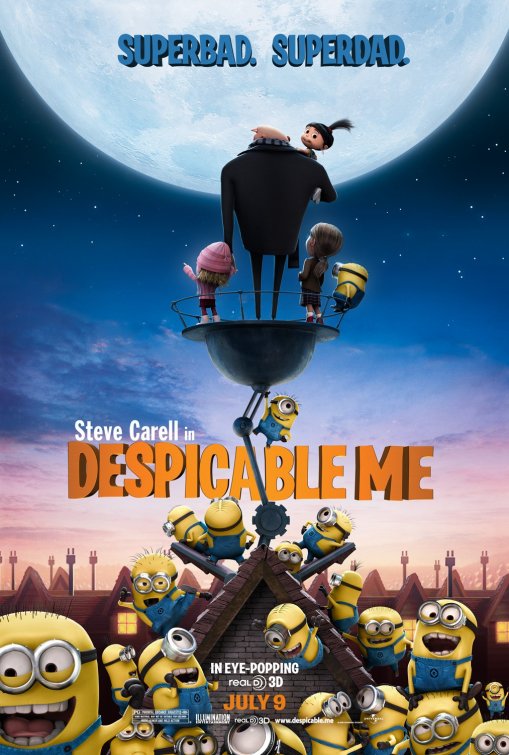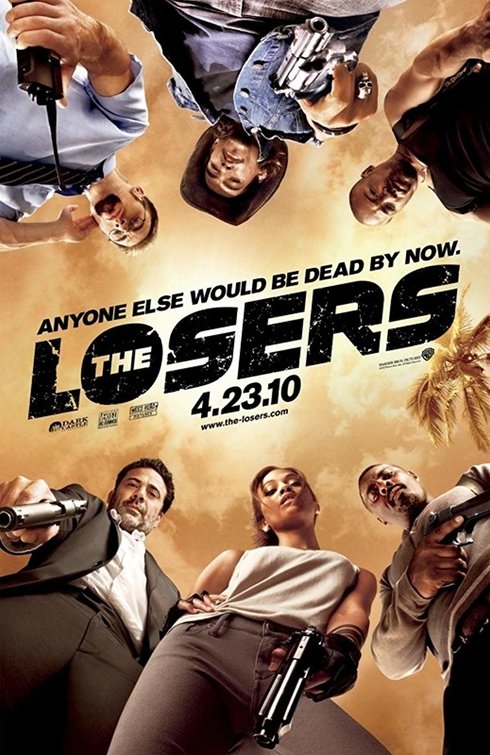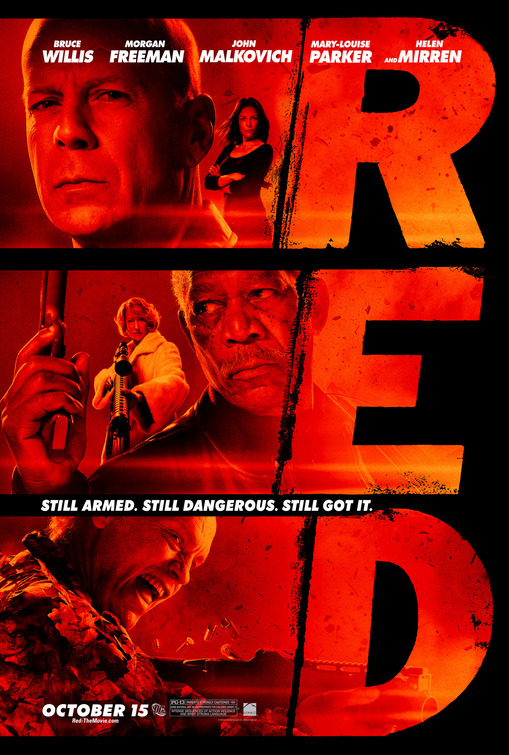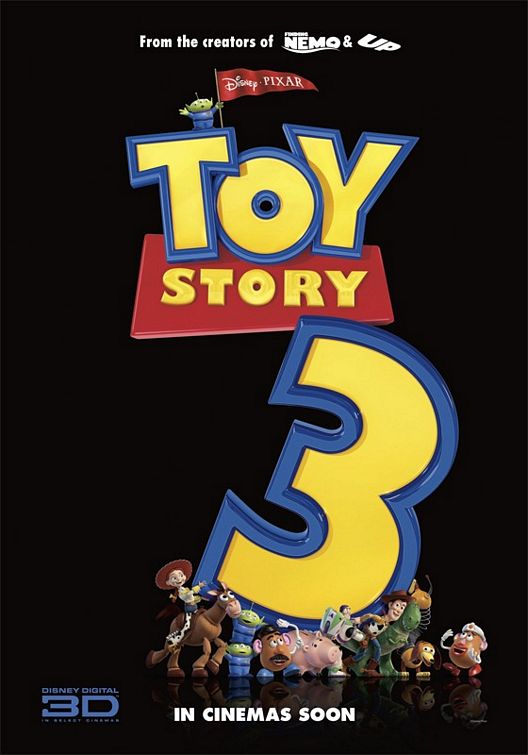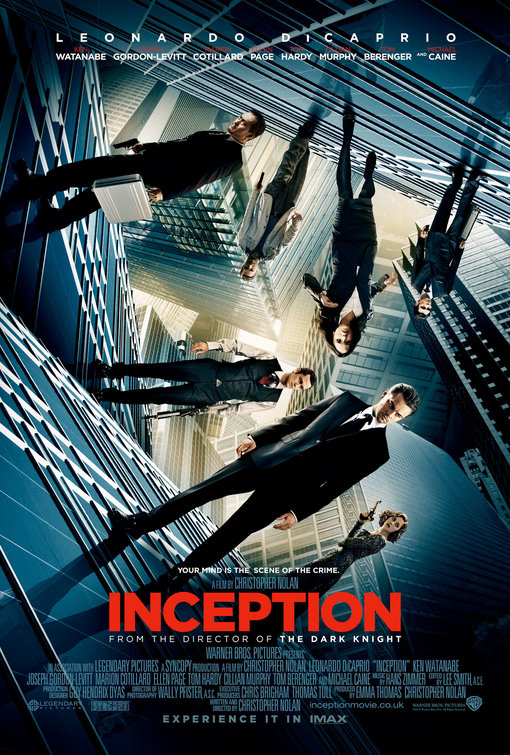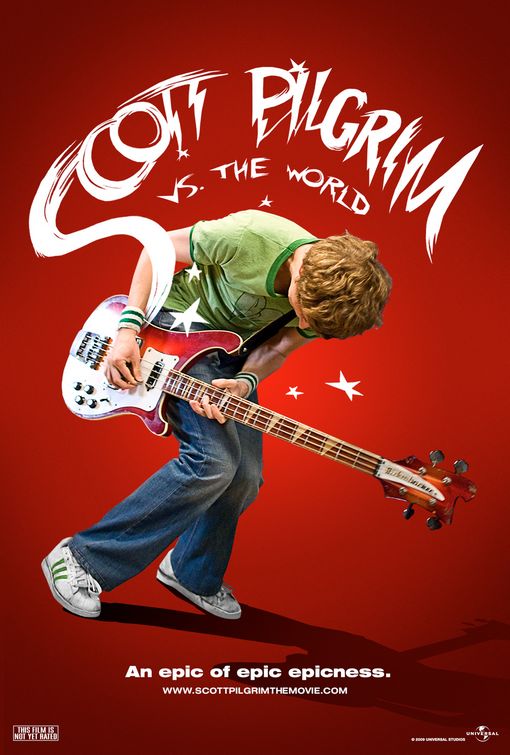It’s taken me a while to process my feelings about Bohemian Rhapsody, the recent Queen/Freddie Mercury biopic. I didn’t hate it, but I didn’t love it either. There are things I love about it, but I'll admit to being a huge Queen fan verging on the obsessive. When you're that kind of fan, you tend to devour everything about the band, good and bad, meaning that you have certain expectations when something like a biopic is announced, and even when you try to manage (read: lower) those expectations, little things can be infuriating. Some will liken this to “it's not like the book” syndrome, but it’s something deeper, because it involves real life figures.
Let me explain. There have been times when I was younger when I was disappointed by adaptations of books into films or for TV. The earliest of these would have been the adaptation of Enid Blyton's Famous Five series of books and stories into a half hour TV series. The inherent problem here should be obvoious: there’s no way a half hour TV show can contain the full plot of a children's book, much less the texture and detail, but I didn’t really understand that at the time. I felt betrayed. Similarly, the first time I saw Blade Runner, a film I grew to love, I was crushed, because it wasn’t the same as the source material, Philip K. Dick's Do Androids Dream of Electric Sheep, which I will refer to as “Sheep” for simplicity. Blade Runner follows the plot line of Sheep quite faithfully, but changes some of the characters and removes some of the more obvious markers pointing to the differences between replicants (androids in Sheep) and humans, such as empathy. Ultimately, the final version of Blade Runner distils the essence of the novel well, but it was hard to reconcile until at least the Director's Cut became available.
Here’s where Bohemian Rhapsody comes in: as has been reported in numerous reviews, truth has been sacrificed for narrative propulsion (obvious examples are the shifting of the composition and recording of We Will Rock You from 1977 to the early 80s, the near breakup of Queen when Freddie recorded his solo album, which didn’t actually happen, and Freddie's HIV positive diagnosis being shifted to just before Live Aid from its actual timing in 1987-88. Like I said, I’m a bit obsessive.) Events have been time-shifted to create a more conventional biopic. Truth is, it didn’t have to be this way, as there was more than enough drama in the actual story of Queen without having to resort to standard biopic tropes. There were the management and contract nightmares that nearly bankrupted the band in its early years, from which flowed one other most spectacular kiss-offs to ever be committed to tape: A Night at the Opera's Death on Two Legs. There was the musical experimentation that was merely glossed over. There were the encounters and friendships with the likes of David Bowie and Michael Jackson, the latter of which was reported in Rolling Stone. That’s just the beginning, but already you would have a more interesting and less rote biopic.
In the plus column, you have several of the performances. Rami Malek's performance as Freddie Mercury is great. He really does a solid job of embodying Mercury and Gwilym Lee as Brian May comes across as if the producers went back in time and brought back 70s era Brian May to play himself. The resemblance is uncanny. Also of note are Lucy Boynton as Mary Austin and Tom Hollander as Jim Beach.
And thus, the conflict arises. Do I give Bohemian Rhapsody a pass for what it gets right, or do I dismiss it for the things it gets so spectacularly wrong and manufactures to forward its vision of the narrative? I’m torn. So, let me ask you: have you ever felt the same way about other biopics? Feel free to comment.
The 'Dark Room
A look inside the world of an unrepentant movie addict. Musings sometimes wander into other media.
Tuesday, February 12, 2019
Monday, October 29, 2018
In Defence of.... Indiana Jones and the Temple of Doom
It's been a long time since I've written, but many things have kept me occupied. Frankly, it was a discussion with a friend that made me realise that there are people out there who actually read what I have to say, so i decided to get back on the horse with a new sub-topic.
The purpose of In Defence of... is to take what I consider to be an unfairly maligned film/album/whatever, and make the case for why it's better than you think it is. when I get around to posting these, I will set up at least three reasons why, and will invite discussion in the comments section. So, without further ado:
In Defence of..... Indiana Jones and the Temple of Doom
I'm just going to come out and say it: Indiana Jones and the Temple of Doom is my favourite of the Indiana Jones movies for multiple reasons. Don't get me wrong; I love Raiders of the Lost Ark, really like Indiana Jones and the Last Crusade and even found Indiana Jones and the Kingdom of the Crystal Skull enjoyable, but Indiana Jones and the Temple of Doom holds a special place in my heart, even though Steven Spielberg himself has indicated he thought it was a mistake to go as dark as the film did. Make no mistake: Temple of Doom (which is the shorthand I will use from here on out) is dark. It's also a funny, goofy, over-the-top homage to the adventure serials that George Lucas and Steven Spielberg grew up watching on Saturday afternoons at the movies. This is not to say it falls into the category of "so-bad-it's-good"; far from it. Temple of Doom expertly weaves dialogue, stock characters and stereotypes into a story that hews far closer to those Saturday morning serials than Raiders of the Lost Ark did. Here's why.
World Building
Many sequels trade on the goodwill of the films that preceded them, and expand those films' universes without having to tread through all that exposition all over again. This was described by Jay Roach, director of the Austin Powers films as the first film setting the universe up while the second film allowed the characters to play in it. Prime examples include Terminator 2: Judgment Day, The Empire Strikes Back, Captain America: The Winter Soldier and...... Indiana Jones and the Temple of Doom.
Now, I know some of you will want to point out that Temple of Doom is a prequel, but hear me out: We got a LOT of exposition in Raiders of the Lost Ark that informs the characterisations and situations we see in Temple of Doom. Case in point: We know from the first film that while Indy is a teacher at a university, his true passion is for field research and collecting ancient artifacts. Many took exception to the choice of quest in the second film, but let's remember that the search for the Sankara stones and the discovery of the Thuggee cult being alive and well is not Indy's primary mission this time around; when we open the film, Indy is negotiating an exchange of the remains of Emperor Nurhachi for a diamond, showing that Indy can be a mercenary when he wants to be and his motives may not always have been as purely scientific as they appear in Raiders. When Indy does begin his quest for the Sankara stones, we see the change of heart begin that informs his character in Raiders. This is a great example of world building and character development.
Continuing with people's objection to the choice of quest in the film is the underlying suggestion that this objection is rooted in some mistaken belief that an archaeologist like Indy would be searching primarily for Judeo-Christian relics rather than pagan idols, relics of their worship, or other cultural relics. Believe it or not, this is a real objection that I have heard voiced, and displays a fundamental misunderstanding not only of the Indiana Jones world, but of archaeology generally. Let's go back to Raiders, shall we? At the beginning of the film, Indy is entering a Central American temple to retrieve........ an idol. When he is engaged to search for the Ark of the Covenant, it is at the behest of the Federal Government, and to prevent the Ark from falling into the hands of the Nazis, not some sort of "holy crusade". In Indiana Jones and the Last Crusade, all of the relics are Judeo-Christian, but that is a reflection of the backlash from Temple of Doom; a conscious decision to give the people what they want, and an error in judgment in my humble opinion. It quite literally turns the film into a "holy crusade". A quest for non-Judeo-Christian relics is also more in keeping with the spirit of the serials from which the Indiana Jones series draws its inspiration. These serials were populated with explorations of foreign lands filled with "savages" and strange relics, and screenwriters Willard Huyck and Gloria Katz are well versed in this sort of thing. They clearly did their homework with the Thuggee, but also made it accessible to the audience. The end result is a richer onscreen experience.
Now, let's turn to Willie Scott. Many people have told me how much they hate this character and how shrill and whiny she is. Fair point, but if you want shrill, watch Ethel Merman in It's a Mad Mad Mad Mad World, but I digress. Fans are going to compare Willie to Marion Ravenwood from the first film, who was a hard-drinking, tough as nails woman who could go toe to toe with Indy or any of the villains in the first film. However, if you were paying attention to the dialogue about the forbidden underage romance between Indy and Marion, it becomes clear that the choice of Willie as a damsel in distress was a conscious one to demonstrate that after the brutal breakdown of the Indy/Marion relationship, Indy found solace with shall we say, less "complicated" women [I know my feminist friends will have a field day with that one, but don't blame me; blame the screenwriters]. As well, by the end of the film, Willie has survived her "trial by fire" and becomes a stronger woman, even if she didn't want to undertake the journey. Contrast this with the wholesale changes to Marcus Brody and Sallah in Last Crusade, where they go from being quite sober characters in Raiders to being demoted to comic relief buffoons in Last Crusade. Brody is turned into a doddering, absent-minded professor, and Sallah is little more than a comic foil.
Continuing with people's objection to the choice of quest in the film is the underlying suggestion that this objection is rooted in some mistaken belief that an archaeologist like Indy would be searching primarily for Judeo-Christian relics rather than pagan idols, relics of their worship, or other cultural relics. Believe it or not, this is a real objection that I have heard voiced, and displays a fundamental misunderstanding not only of the Indiana Jones world, but of archaeology generally. Let's go back to Raiders, shall we? At the beginning of the film, Indy is entering a Central American temple to retrieve........ an idol. When he is engaged to search for the Ark of the Covenant, it is at the behest of the Federal Government, and to prevent the Ark from falling into the hands of the Nazis, not some sort of "holy crusade". In Indiana Jones and the Last Crusade, all of the relics are Judeo-Christian, but that is a reflection of the backlash from Temple of Doom; a conscious decision to give the people what they want, and an error in judgment in my humble opinion. It quite literally turns the film into a "holy crusade". A quest for non-Judeo-Christian relics is also more in keeping with the spirit of the serials from which the Indiana Jones series draws its inspiration. These serials were populated with explorations of foreign lands filled with "savages" and strange relics, and screenwriters Willard Huyck and Gloria Katz are well versed in this sort of thing. They clearly did their homework with the Thuggee, but also made it accessible to the audience. The end result is a richer onscreen experience.
Now, let's turn to Willie Scott. Many people have told me how much they hate this character and how shrill and whiny she is. Fair point, but if you want shrill, watch Ethel Merman in It's a Mad Mad Mad Mad World, but I digress. Fans are going to compare Willie to Marion Ravenwood from the first film, who was a hard-drinking, tough as nails woman who could go toe to toe with Indy or any of the villains in the first film. However, if you were paying attention to the dialogue about the forbidden underage romance between Indy and Marion, it becomes clear that the choice of Willie as a damsel in distress was a conscious one to demonstrate that after the brutal breakdown of the Indy/Marion relationship, Indy found solace with shall we say, less "complicated" women [I know my feminist friends will have a field day with that one, but don't blame me; blame the screenwriters]. As well, by the end of the film, Willie has survived her "trial by fire" and becomes a stronger woman, even if she didn't want to undertake the journey. Contrast this with the wholesale changes to Marcus Brody and Sallah in Last Crusade, where they go from being quite sober characters in Raiders to being demoted to comic relief buffoons in Last Crusade. Brody is turned into a doddering, absent-minded professor, and Sallah is little more than a comic foil.
Richer Dialogue
Hear me out on this one. Raiders is a well-written film, but the dialogue in Temple of Doom "snaps" like dialogue from a 40s film noir. It's witty, funny, well timed and sometimes gut-bustingly hilarious. The exchange between Willie and Indy which begins with the bowl of fruit is some of the best dialogue written in the 80s, and the actors handle the timing perfectly, including when the scene transforms into one of Indy's many fights for his life in the film. I laugh out loud every time I watch this scene, and I've watched it many times.
Let's be clear on one thing from the start: Raiders of the Lost Ark is no slouch in the dialogue department, but Temple of Doom is better. Huyck and Katz, being friends of George Lucas from their film school days, had worked closely with Lucas on another film with great dialogue: American Graffiti. They are students of hard boiled, rapid fire repartee. The dialogue in Temple of Doom has fantastic rhythm and content, while Raiders is simply solid as an action movie. When we got to Last Crusade, Jeffrey Boam's script was merely serviceable, with a few good zingers here and there. When your best lines involve a father and son bedding the same woman, the question of whether or not you've run out of ideas comes to the fore.
Gore
Temple of Doom has been immortalised as one of two films either produced or directed by Steven Spielberg that resulted in the creation of the PG-13 rating. The other was Gremlins, though Poltergeist also stretched the PG rating about as far as it could go at the time. Here, the blood and guts (especially guts) starts almost at the beginning, with the very violent opening set piece at the Club Obi Wan. People are shot, blood is spilled, and one character is impaled with a flaming sword. This continues into the very inventive dining scene (clearly meant as Swiftian satire; chilled monkey brains, anyone?) and beyond, with the sacrificial rituals being the part to which most people refer when commenting on how disgusting they think Temple of Doom is. It seems to me they forgot the substantial gore in Raiders: a man is impaled on hidden spears that spring out into a passageway, a man is chewed up by an airplane propeller, and people melt and explode in the final set piece of the film. By comparison, the gore in Temple of Doom is cartoonish and largely played strictly for the "gross-out" factor. It has no analogue in reality. Moving on to Last Crusade, the violence is almost tasteful and nearly bloodless, which is pretty much the antithesis of the Saturday morning serial.
I'm not saying that an Indiana Jones film has to ape every element of a serial; rather, it needs to contain elements and expand on or extrapolate from them to make them relatable for modern audiences. In the case of Raiders and Temple of Doom, each film winds both paying homage and being a product of its time. Raiders is pure escape, something sorely needed during a time of recession. Temple of Doom winds up indirectly commenting on the excesses of the mid-1980s. By comparison, Last Crusade seems almost aimless.
The last element here that sets Temple of Doom apart is menace, which I'm grouping in with gore because even though menace is not in and of itself gory, it helps to give certain elements of gore gravity. In Raiders, even though some of the gore might look ridiculous in isolation, in context, the menace makes it more effective. Temple of Doom does it even better, because the human sacrifice scenes, even though they are decidedly over the top, become frightening because of the context. In addition, the stakes seem higher because Indy and company seem to be in far greater danger. The effect of the loss of the Sankara stones on the village is devastating, and people seeking mere escapism suddenly realised that what was going on here had more depth.
Conclusion
In short, Temple of Doom is a film in need of reappraisal, both as a prequel to Raiders of the Lost Ark, and one of many underappreciated films of the 80s, notwithstanding its success at the box office. Because of its great dialogue, better developed characters and setting, and greater willingness to shock (though not without an underlying purpose), it is the one film in the Indiana Jones series to which I keep returning, because it doesn't feel like a rehashing of previous successes. It's a truer homage to the serials that inspired the Indiana Jones series than even Raiders of the Lost Ark. That makes it worth defending.
Thursday, March 8, 2012
Musical Left Turns
I was thinking about doing a best of 2011 post regarding movies and music, but I don't think I'm there yet; I simply haven't seen all the movies from 2011 I wanted to see yet, so I don't think it's fair to judge at this stage. Musically, 2011 was a great year for innovation, if you knew where to look, which brings me to this post's topic: by musical left turns, I'm referring to experiments by bands and recording artists where they venture into musical territory with which they are not normally associated. Sometimes the experiment is a colossal failure, sometimes it is mildly interesting, and then other times, you sit back and wonder, "Why haven't they tried this before?" To that end, I present a handful of musical left turns; if you feel so inclined, suggest some I haven't heard.
Garth Brooks: The Life of Chris Gaines
This one fits into the "mildly interesting" category, mostly because it really isn't too musically different from what Garth was doing at the time musically. There was an image change for the album, but it stands now more as an unintentional indictment of the homogenisation of country music in the 90s into something more like pop-rock, something that continues to this day. About the most unusual track on the album is "My Love Tells Me So", which is a perfect slice of faux-80s pop, and the one thing that elevates this entry from, "What was he thinking?" to "mildly interesting."
Harry Connick, Jr.: She & Star Turtle
Harry Connick, Jr. was shaping up to be the second coming of Frank Sinatra (standards singer, movie career) when he dropped She on an unsuspecting public. To be known for lavish jazz arrangements and smooth vocals and suddenly release a pair of funk albums definitely qualifies as a left turn. Still employing longtime collaborator Tracey Freeman as producer, Connick assembled a funk/soul band and put together a raw, spacious sound that was equal parts Earth, Wind & Fire, James Brown and Steely Dan. If you were to ask most Connick stalwarts, they hated the new sound. Me? I really enjoyed it, and loved what it did to his overall sound: Connick became more daring and experimental, not content to simply play standards. Listen to his Christmas albums Harry for the Holidays and What a Night!, as well as Oh, My NOLA and Your Songs. Definitely a "Why haven't they tried this before" entry.
Robert Plant & Alison Krauss: Raising Sand
More of a stretch for Plant than Krauss. Most of us are used to Plant's wailing vocals as lead singer of Led Zeppelin and solo, so bluegrass seemed an ill fit, but given the right collaborators, Plant turned in an album that straddles "mildly interesting" and "why hasn't he tried this before?"
Bjork: Medulla
Bjork is constantly experimenting musically; her latest album comes with its own iPod app to allow you to explore and manipulate the content, but this album was a curiosity when it came out: an a capella album, featuring contributions from Mike Patton, who we'll get to later in the list and Rahzel "the human beatbox." Bjork has always had a unique vocal style, and when people think a capella, my best guess is that they're usually thinking of doo-wop revivals like The Nylons, vocal experimentation like Bobby McFerrin or the likes of Straight No Chaser; Medulla winds up challenging all notions of a capella by combining elements of opera, hip-hop, techno and modern pop. It's a fascinating listen, and definitely in the "why didn't she try this before?" category.
The Honeydrippers: Volume One
Plant makes the page again, this time with Led Zeppelin cohort Jimmy Page and Jeff Beck, as well as a passel of studio musicians recreating the early days of rock & roll, ranging from doo-wop ballads to blues. It shouldn't be a secret that the blues are no stretch for Zep alums, but the first single, "Sea of Love", was something completely different, and it worked.
Mike Patton: Mondo Cane
Much like Bjork, with whom he collaborated on Medulla, Mike Patton is a musical chameleon with a unique voice. Unlike Bjork, Patton's voice is chameleonic to the extent that he can sing anything. Hence, an album of Italian pop songs, including the theme to the 60s camp comic-book film Danger: Diabolik, "Deep Deep Down". Patton makes it look easy on this quantum leap from his Faith No More and Mr. Bungle days. Worth repeated listens.
Korn: The Path of Totality
Anyone out there familiar with dubstep? The current dance music craze with dramatically slowed-down beats and the wobbling wawawawawa bass lines that seem to extend far below the range of human hearing? Ever heard of Skrillex? While this might seem to be a strange bedfellow for the typically self-loathing nu-metal of Korn, because of its similarities to industrial rock, it makes for a better than expected fit. The best track on the album, hands down, is Narcissistic Cannibal, but the rest of the tracks aren't exactly slouching. Though I don't expect them to continue in the dubstep idiom beyond this album, I'm certain it will influence future works.
ABC: Beauty Stab
Lumped in with the New Romantic movement, based on the success of their debut album, ABC was suffering an identity crisis: as one of the rare bands out there with a full-time string and horn section, where to go from a super-successful worldwide debut? If you're Martin Fry, Mark White and Stephen Singleton, you ditch the mini-orchestra and release a stripped down rock album with a smattering of saxophone (since sax was essential in 1983) and wait for the accolades. And wait. And wait. And watch as your fans abandon you faster than rats on the Titanic. My take? I like Beauty Stab. I like it a lot. It's an album that's more Rolling Stones than Roxy Music, and for the better IMHO. If you can find it, it's worth a listen beyond "That Was Then, But This is Now", arguably one of the weaker tracks on the album.
Any other left turns you think I should look at, either from the "what were they thinking?" paradigm, since I can't resist a train wreck, or otherwise? Let me know in the comments.
Garth Brooks: The Life of Chris Gaines
This one fits into the "mildly interesting" category, mostly because it really isn't too musically different from what Garth was doing at the time musically. There was an image change for the album, but it stands now more as an unintentional indictment of the homogenisation of country music in the 90s into something more like pop-rock, something that continues to this day. About the most unusual track on the album is "My Love Tells Me So", which is a perfect slice of faux-80s pop, and the one thing that elevates this entry from, "What was he thinking?" to "mildly interesting."
Harry Connick, Jr.: She & Star Turtle
Harry Connick, Jr. was shaping up to be the second coming of Frank Sinatra (standards singer, movie career) when he dropped She on an unsuspecting public. To be known for lavish jazz arrangements and smooth vocals and suddenly release a pair of funk albums definitely qualifies as a left turn. Still employing longtime collaborator Tracey Freeman as producer, Connick assembled a funk/soul band and put together a raw, spacious sound that was equal parts Earth, Wind & Fire, James Brown and Steely Dan. If you were to ask most Connick stalwarts, they hated the new sound. Me? I really enjoyed it, and loved what it did to his overall sound: Connick became more daring and experimental, not content to simply play standards. Listen to his Christmas albums Harry for the Holidays and What a Night!, as well as Oh, My NOLA and Your Songs. Definitely a "Why haven't they tried this before" entry.
Robert Plant & Alison Krauss: Raising Sand
More of a stretch for Plant than Krauss. Most of us are used to Plant's wailing vocals as lead singer of Led Zeppelin and solo, so bluegrass seemed an ill fit, but given the right collaborators, Plant turned in an album that straddles "mildly interesting" and "why hasn't he tried this before?"
Bjork: Medulla
Bjork is constantly experimenting musically; her latest album comes with its own iPod app to allow you to explore and manipulate the content, but this album was a curiosity when it came out: an a capella album, featuring contributions from Mike Patton, who we'll get to later in the list and Rahzel "the human beatbox." Bjork has always had a unique vocal style, and when people think a capella, my best guess is that they're usually thinking of doo-wop revivals like The Nylons, vocal experimentation like Bobby McFerrin or the likes of Straight No Chaser; Medulla winds up challenging all notions of a capella by combining elements of opera, hip-hop, techno and modern pop. It's a fascinating listen, and definitely in the "why didn't she try this before?" category.
The Honeydrippers: Volume One
Plant makes the page again, this time with Led Zeppelin cohort Jimmy Page and Jeff Beck, as well as a passel of studio musicians recreating the early days of rock & roll, ranging from doo-wop ballads to blues. It shouldn't be a secret that the blues are no stretch for Zep alums, but the first single, "Sea of Love", was something completely different, and it worked.
Mike Patton: Mondo Cane
Much like Bjork, with whom he collaborated on Medulla, Mike Patton is a musical chameleon with a unique voice. Unlike Bjork, Patton's voice is chameleonic to the extent that he can sing anything. Hence, an album of Italian pop songs, including the theme to the 60s camp comic-book film Danger: Diabolik, "Deep Deep Down". Patton makes it look easy on this quantum leap from his Faith No More and Mr. Bungle days. Worth repeated listens.
Korn: The Path of Totality
Anyone out there familiar with dubstep? The current dance music craze with dramatically slowed-down beats and the wobbling wawawawawa bass lines that seem to extend far below the range of human hearing? Ever heard of Skrillex? While this might seem to be a strange bedfellow for the typically self-loathing nu-metal of Korn, because of its similarities to industrial rock, it makes for a better than expected fit. The best track on the album, hands down, is Narcissistic Cannibal, but the rest of the tracks aren't exactly slouching. Though I don't expect them to continue in the dubstep idiom beyond this album, I'm certain it will influence future works.
ABC: Beauty Stab
Lumped in with the New Romantic movement, based on the success of their debut album, ABC was suffering an identity crisis: as one of the rare bands out there with a full-time string and horn section, where to go from a super-successful worldwide debut? If you're Martin Fry, Mark White and Stephen Singleton, you ditch the mini-orchestra and release a stripped down rock album with a smattering of saxophone (since sax was essential in 1983) and wait for the accolades. And wait. And wait. And watch as your fans abandon you faster than rats on the Titanic. My take? I like Beauty Stab. I like it a lot. It's an album that's more Rolling Stones than Roxy Music, and for the better IMHO. If you can find it, it's worth a listen beyond "That Was Then, But This is Now", arguably one of the weaker tracks on the album.
Any other left turns you think I should look at, either from the "what were they thinking?" paradigm, since I can't resist a train wreck, or otherwise? Let me know in the comments.
Wednesday, January 18, 2012
Cinema Répréhensible #1: Fire Down Below
Welcome to the first entry in the Cinema Répréhensible mini-series of reviews that will frequent this blog from time to time. The purpose of this mini-series is to highlight those ridiculously awful films that are nigh impossible to stop watching, no matter how hard you try. Our first entry is Steven Seagal's environmental screed from 1997, Fire Down Below. It's a standard Hollywood plot of "outsider comes into town to straighten out crooked goings-on involving corrupt law enforcement and a good 'ol boys network (GOBN) that is tied into the money running town, typically in the hands of one man." We have seen this formula a million times before, from the various iterations of Walking Tall, Road House, etc. What is it that makes Fire Down below so utterly awful, and yet so car-wreck watchable?
Let's start off with the cliches: the plot above is one; another is the setting of the film in the "Deep South." There are cameos by Country music artists Marty Stuart and Travis Twitt, er, I mean, Tritt. The mullets on display have lives of their own, including production assistants, and there is a showdown in a casino. There's the local church, which meets an unfortunate fate, and the initially-untrusting-but-eventually-supportive locals, dressed stereotypically. This time around, the corruption is all about toxic waste and its possible leakage into the water supply, in which the GOBN is complicit because of the money they're being paid to store the stuff deep in abandoned mines. There's some family drama, including implications of craziness, incest, etc. and the damsel in distress in the obligatory romantic subplot is a kindly [wait for it...... just a little longer......] beekeeper. Yep, beekeeper; see her daddy was originally a miner and became an engineer who decided to get out of that and start keeping bees as his third career because of all the corruption involved in the mines and what grew out of it, including the toxic waste business, which has somehow managed to finance the casino above. Well, of course, Daddy winds up dead and daughter gets blamed, but is acquitted because the police force is so incompetent, they can't even frame someone properly. The whole enterprise would normally scream direct-to-video, but because this is 1997 and Steven Seagal is involved, it's big budget, which means it gets a well known screenwriter (Jeb Stuart) a competent director, and decent production values. Two minutes in, we know exactly how this movie is going to end, but we still keep watching. Why? The script isn't particularly compelling (and verges on the ridiculous at times), and Seagal is not an Oscar calibre thespian, though he's not terrible here.
First things first: this is a beautifully shot film. There are scenes you could hang on a wall as artwork: gorgeous sunrises and sunsets, scenic tableaus--did I mention this was beautifully shot? The use of colour is impressive for a stereotypical action film. This is even more impressive when you realise that the Director of Photography, Tom Houghton, is mostly known for his television work; he's not a household name. Second, the acting talent involved does an impressive job with the lacklustre script: solid character actors like Harry Dean Stanton, Stephen Lang, Marg Helgenberger and Richard Masur, and equally impressive musicians turned actors like Kris Kristofferson (who should stick to acting; just sayin...) and Levon Helm. Third, the action is well staged, as is the rest of the film, which begs the question: why are such talented people involved with such dreck? The answer, of course, is that even talented people have to pay the bills, and if Hollywood is creatively bankrupt, you take what you can get. Until next time, here's a trailer if you're curious.
Let's start off with the cliches: the plot above is one; another is the setting of the film in the "Deep South." There are cameos by Country music artists Marty Stuart and Travis Twitt, er, I mean, Tritt. The mullets on display have lives of their own, including production assistants, and there is a showdown in a casino. There's the local church, which meets an unfortunate fate, and the initially-untrusting-but-eventually-supportive locals, dressed stereotypically. This time around, the corruption is all about toxic waste and its possible leakage into the water supply, in which the GOBN is complicit because of the money they're being paid to store the stuff deep in abandoned mines. There's some family drama, including implications of craziness, incest, etc. and the damsel in distress in the obligatory romantic subplot is a kindly [wait for it...... just a little longer......] beekeeper. Yep, beekeeper; see her daddy was originally a miner and became an engineer who decided to get out of that and start keeping bees as his third career because of all the corruption involved in the mines and what grew out of it, including the toxic waste business, which has somehow managed to finance the casino above. Well, of course, Daddy winds up dead and daughter gets blamed, but is acquitted because the police force is so incompetent, they can't even frame someone properly. The whole enterprise would normally scream direct-to-video, but because this is 1997 and Steven Seagal is involved, it's big budget, which means it gets a well known screenwriter (Jeb Stuart) a competent director, and decent production values. Two minutes in, we know exactly how this movie is going to end, but we still keep watching. Why? The script isn't particularly compelling (and verges on the ridiculous at times), and Seagal is not an Oscar calibre thespian, though he's not terrible here.
First things first: this is a beautifully shot film. There are scenes you could hang on a wall as artwork: gorgeous sunrises and sunsets, scenic tableaus--did I mention this was beautifully shot? The use of colour is impressive for a stereotypical action film. This is even more impressive when you realise that the Director of Photography, Tom Houghton, is mostly known for his television work; he's not a household name. Second, the acting talent involved does an impressive job with the lacklustre script: solid character actors like Harry Dean Stanton, Stephen Lang, Marg Helgenberger and Richard Masur, and equally impressive musicians turned actors like Kris Kristofferson (who should stick to acting; just sayin...) and Levon Helm. Third, the action is well staged, as is the rest of the film, which begs the question: why are such talented people involved with such dreck? The answer, of course, is that even talented people have to pay the bills, and if Hollywood is creatively bankrupt, you take what you can get. Until next time, here's a trailer if you're curious.
Wednesday, November 9, 2011
21st Century Fandom
Just a quick post this evening. When I was a kid, getting a letter from a celebrity or getting the opportunity to speak to a celebrity was a really big deal. These were people who were seemingly inaccessible to the average person. One encounter that sticks out in my mind was when I got the opportunity to speak to Brian May and Roger Taylor of Queen on Westwood One's syndicated show Rocklines. I also got a copy of their latest CD as well as a special compilation disc created exclusively for callers. This was 1989, and I was over the moon. i even remember the question I asked, which was about the closing track of the album, "The Miracle". The track was titles "Was It All Worth It", and it turned out to be eerily prophetic of the band's demise.
Fast forward 22 years, and my musical tastes have expanded into indie music territory. My first post on this blog was notionally about how independent artists deserve our support far more than the arena behemoths who are seeking to drain every last penny of royalty money out of our pockets. One of those bands is Hellogoodbye, who are a fantastic live band and deserve every fan they have. On 17 September of this year. Hellogoodbye ran a promo with respect to their latest album: if their Facebook page got a certain number of likes by the 17th, they would open an offer to buy the album on CD for $1. The fan response was phenomenal, and we decided to participate. As a result, hellagoodbuys.net (the band's online store) got severely backlogged with orders, and CDs have only begun shipping recently. In the interim, the online store sent us a code that unlocked high bitrate downloads of the songs on the album while we were waiting for the physical copies to arrive. Given the shipping and handling costs, we decided to buy 2 CDs and a tote bag to make it more worthwhile. As it turns out, they ran out of the tote bag, but their customer service people (who I can only assume are close friends and family of the band) let us know almost immediately about the shortage and gave us other options. What really floored me was a personal email from Forrest Kline, the band's lead vocalist and guitarist, which I received this morning, further advising me on the tote bag situation, and letting me knw that he's already gone ahead and shipped the CDs, rather than waiting for new tote bags to arrive. This level of dedication to the fans is something peculiar to indie artists, and is yet another reason why they get my support. Every time I buy from an indie band, I know exactly where the money's going. In what other situation can you say that?
Fast forward 22 years, and my musical tastes have expanded into indie music territory. My first post on this blog was notionally about how independent artists deserve our support far more than the arena behemoths who are seeking to drain every last penny of royalty money out of our pockets. One of those bands is Hellogoodbye, who are a fantastic live band and deserve every fan they have. On 17 September of this year. Hellogoodbye ran a promo with respect to their latest album: if their Facebook page got a certain number of likes by the 17th, they would open an offer to buy the album on CD for $1. The fan response was phenomenal, and we decided to participate. As a result, hellagoodbuys.net (the band's online store) got severely backlogged with orders, and CDs have only begun shipping recently. In the interim, the online store sent us a code that unlocked high bitrate downloads of the songs on the album while we were waiting for the physical copies to arrive. Given the shipping and handling costs, we decided to buy 2 CDs and a tote bag to make it more worthwhile. As it turns out, they ran out of the tote bag, but their customer service people (who I can only assume are close friends and family of the band) let us know almost immediately about the shortage and gave us other options. What really floored me was a personal email from Forrest Kline, the band's lead vocalist and guitarist, which I received this morning, further advising me on the tote bag situation, and letting me knw that he's already gone ahead and shipped the CDs, rather than waiting for new tote bags to arrive. This level of dedication to the fans is something peculiar to indie artists, and is yet another reason why they get my support. Every time I buy from an indie band, I know exactly where the money's going. In what other situation can you say that?
Wednesday, September 7, 2011
Star Wars Burnout
Soooo.... The Star Wars "Saga" is coming out on Blu-Ray Disc this month; September 16th, to be precise. Back in the mid-90s, when the Trilogy (as it then was) came out on VHS and LaserDisc "one last time", I was all about getting the widescreen VHS (LaserDisc really hadn't caught on in my neck of the woods) and went to great lengths to do so. When the "Special Editions" came out in 1997, I had to get them. I even bought the DVD set, which had even further changes in late 2004, albeit at a seriously reduced price. And now? I really don't care anymore.
I suppose an explanation is in order. At first I thought the changes to the SEs were kind of cool, but then they began to gnaw at me, enough to lead me to join the forum originaltrilogy.com, which was dedicated to getting the powers that be (read: George Lucas and 20th Century Fox) to release the original versions of the films on DVD with the attendant care associated with transferring such material into the digital realm. Their response was to take LaserDisc transfers from the 90s and put them on DVD. I could go into why this is insufficient, but again, that isn't the point. The point is that I feel like I have outgrown them. This became even more true as I worked my way through the prequels, which are not terrible films, but not great either; you have to be in a certain frame of mind to watch them.
Star Wars was my entry point into the worlds of science fiction, special effects, and an overall love of film. This was a film that said that a movie could be made on a relatively low budget and still have stunning special effects with a plot that really moved. Dialogue wasn't necessarily the best, but that's beside the point; I had been introduced to the world of film at the age of 6, and there was no turning back. I had actually contemplated a career in film, but moved into other areas instead. As I got deeper into film, I found even better films and gained an appreciation for more cerebral works, but could still go back to Star Wars and enjoy myself. Along the way, that became less and less the case. Part of that is attributable to George Lucas' Antonio Gaudi-esque need to have the films change perpetually, but more to the omnipresence of Star Wars. Spike runs the films almost as often as TBS used to run James Bond movies, along with their snarky commercials involving characters from the Star Wars universe, which were amusing at first, but have now become tired.
Star Wars has become the equivalent of a worn-out security blanket, which has been patched over with mismatched newer fabric; it's still recognisable, but it no longer serves the same purpose. Will I buy the Blu-Rays? I really don't know right now; it's not a priority anymore. I suppose if my kids beg and plead for them enough, I'll give in, but for now, I'll just be happy with my pancake moulds I got at Williams-Sonoma and my Lego toys.
I suppose an explanation is in order. At first I thought the changes to the SEs were kind of cool, but then they began to gnaw at me, enough to lead me to join the forum originaltrilogy.com, which was dedicated to getting the powers that be (read: George Lucas and 20th Century Fox) to release the original versions of the films on DVD with the attendant care associated with transferring such material into the digital realm. Their response was to take LaserDisc transfers from the 90s and put them on DVD. I could go into why this is insufficient, but again, that isn't the point. The point is that I feel like I have outgrown them. This became even more true as I worked my way through the prequels, which are not terrible films, but not great either; you have to be in a certain frame of mind to watch them.
Star Wars was my entry point into the worlds of science fiction, special effects, and an overall love of film. This was a film that said that a movie could be made on a relatively low budget and still have stunning special effects with a plot that really moved. Dialogue wasn't necessarily the best, but that's beside the point; I had been introduced to the world of film at the age of 6, and there was no turning back. I had actually contemplated a career in film, but moved into other areas instead. As I got deeper into film, I found even better films and gained an appreciation for more cerebral works, but could still go back to Star Wars and enjoy myself. Along the way, that became less and less the case. Part of that is attributable to George Lucas' Antonio Gaudi-esque need to have the films change perpetually, but more to the omnipresence of Star Wars. Spike runs the films almost as often as TBS used to run James Bond movies, along with their snarky commercials involving characters from the Star Wars universe, which were amusing at first, but have now become tired.
Star Wars has become the equivalent of a worn-out security blanket, which has been patched over with mismatched newer fabric; it's still recognisable, but it no longer serves the same purpose. Will I buy the Blu-Rays? I really don't know right now; it's not a priority anymore. I suppose if my kids beg and plead for them enough, I'll give in, but for now, I'll just be happy with my pancake moulds I got at Williams-Sonoma and my Lego toys.
Monday, February 28, 2011
Of the Oscars, Top 10 Lists, and Other Thoughts.......
So...... how about them Oscars? I was so enthralled, I was working on about 3 or 4 other things at the same time. As far as the awards portion of the show goes, that usually is a predictable snoozefest, with one or two surprises thrown in for good measure (Trent Reznor and Atticus Ross, my hat is off to you for winning the Best Score Oscar for The Social Network, the first electronic soundtrack to win since, oh, Chariots of Fire?), but the real bore of this year was the extremely safe choice for Oscar hosts. James Franco and Anne Hathaway? C'mon! We all know they're pretty and relatively intelligent, but the writers didn't know what to do with them, making for a very dull telecast. I would almost rather watch C-SPAN or CPAC (Canadian equivalent of C-SPAN).
The King's Speech predictably walked off with four Oscars including Best Picture and Best Actor, Inception with a bunch of technical achievement Oscars, The Fighter with a pair of Supporting trophies, and Natalie Portman wins for playing an unhinged ballerina in Black Swan. Oh, and Pixar gets another trophy for its crowded shelf with Toy Story 3 winning for Best Animated Feature. No drama, no excitement apart from the aforementioned Score win and the best live action short winner (I really want to see his film now, and may download it from iTunes when I get the chance). Sadly, the Razzies weren't any more exciting, since we all knew that The Last Airbender and Sex and the City 2 (it pains me even to type those words) would win the lion's share, and any year where Ashton Kutcher is nominated as Worst Actor is an automatic lock.
It has been said for years that the Oscars are too "safe" and predictable. Why this is a surprise to anyone is beyond me. The Academy of Motion Picture Arts and Sciences is top heavy with baby boomers and octogenarians angling for a lifetime achievement award, precisely the kind of people who will always make the "safe" choice when it comes to both nominees and awards. It pains me to say that possibly the only reason Reznor and Ross picked up their Best Score Oscar was that for all its electronic gloss, The Social Network's music did precisely what it was supposed to do: enhance the mood of the film without drawing too much attention to itself. Daft Punk's score for Tron: Legacy did much the same thing, but had too much of a hit single with the track Derezzed; ergo, it disqualified itself for being too cutting-edge for the Boomers. There is no cure for the Oscars but time, and even that may come too late. The Oscars had edge when they gave the Best Picture award to Midnight Cowboy, an (at the time) X-rated film, which I loathe and detest, but that is a topic for another post. Now, because it is filled with so many hand-wringing former hippies and bleeding hearts, the Academy has no teeth (both literally and figuratively), and has become a bastion of political correctness and "safety." There will be no house-cleaning for some time to come.
What does this mean for the rest of us? We vote with our dollars, and reward those films which make us happy, not the ones the Academy tells us to see. To that end, I have compiled my own top ten list of films from 2010. My list of favourite albums from 2010 (because I'm a dinosaur that way, and still collect albums) follows it. You will notice that some of my picks did get Academy nods, but that's not why they're here.
Top 10 Films of 2010
This list only includes films released in 2010 that I actually saw.
10. Kick-Ass
This was so ridiculously over-the-top in so many ways, I don't know where to begin. Yes, it's foul-mouthed, violent and bloodier than many slasher flicks. It was also incredibly funny in the subversive way that it simultaneously mocked and celebrated the superhero genre. For an in-depth examination of the superhero mystique that isn't a comic-book movie, see The Incredibles or Unbreakable. If you want to see what it would really be like for someone to pull a Batman, see this.
9. Iron Man 2
Not as good as the first in some ways, better in others. Like any good sequel, it took the world created in the first and allowed the characters to play in it. What's not to like?8. Tron: Legacy
I am old enough to have seen Tron in theatres, and was absolutely enthralled. It was one of the first DVDs I ever bought, and I willingly double-dipped for the 20th Anniversary edition when it came out. I didn't see Tron: Legacy until it was close to the end of its run (in 3D), but it was well worth it. Cheesy dialogue? Check. Contrived plot? Check. Wooden acting? Not so much this time around. Mind-blowing visuals? Check and double-check. If atmosphere was mandatory for a film to qualify for an Oscar run, this had it. Did I mention how much I loved the Daft Punk score?
7. Harry Potter and the Deathly Hallows, Part I
I struggled with whether or not to put this on the list, as it's an incomplete film at this point. However, it is a showcase of the evolution Daniel Radcliffe et al have made as actors as they've grown up onscreen. I really can't wait for part II.6. Despicable Me
A lovable movie. Steve Carell sold me as the vaguely Eastern European villain who turns out not to be as bad as he thought he was, and Agnes is just plain adorable. If they make a sequel, please just give the Minions their own movie, because I could watch their antics for hours.
5. The Losers
There were a bunch of similarly themed "mercenaries out to clear their names" films, including the TV-based "The A-Team", which I still have yet to see. This was the first out of the gate this year and was just plain fun. Although based on a graphic novel series, no one is taking him or herself too seriously, making this an enjoyable ride of a film.
4. RED
This has a lot in common with #5, except that the names are more recognizable. A fun piece of the action pie, again based on a graphic novel series (from the same publisher as The Losers, no less), and the rare kind of action movie that even my wife enjoys. Wouldn't mind a sequel in the least.
3. Toy Story 3
Pixar has yet to make a movie that I dislike. The ending came very close to making me cry. Why is it that a computer animation company is one of the very few making films with heart these days?
2. Inception
Call me a sheep if you like, but I found this latest project from Christopher Nolan to be one of the best made films this year. Much like The Prestige, just thinking about it makes me appreciate it more.
1. Scott Pilgrim vs. The World
I'll just admit right now that I am a huge fan of Edgar Wright's work, but this movie took Wright's hyper-caffeinated personality and visuals and put it to its best use yet. Those Michael Cera haters who actively resisted this films charms, get over yourselves and see this now, because this was the most visually inventive, genre-busting film of the year. Also one of my favourite soundtracks this year.
Top 10 Albums of the Year
I'll dispense with the images this time around, and warn that when it comes to music, I don't rank the albums, as each has it's own unique merits.
10. OK Go- Of the Blue Colour of the Sky
This little mind-bending opus, produced by Dave Fridmann (The Flaming Lips, Mercury Rev, MGMT) cranked the fuzz and distortion to 11, offering a falsetto-drenched homage to the music of the 80s. Its closest cousin would be Beck's Midnite Vultures, but Damian Kulash and Co. do much better at the whole blue-eyed soul and funk thing.
9. Deadmau5- 4x4=12
I have only recently discovered Deadmau5, but like good dance music before him, there is a constantly transforming groove (think Daft Punk, The Chemical Brothers, etc.). This is great driving music and since I spend most of my time in the car these days, I can heartily recommend it for that purpose.
8. Hot Hot Heat- Future Breeds
Some bands thrive in the major label world, while others get stifled after awhile. Hot Hot Heat definitely falls into the latter category, as their latest album really seems to benefit from their newfound freedom. Just listen to tracks like 21@12 and Goddess of the Prairie and feel the joy of liberty. It's infectious.
7. Mike Patton- Mondo Cane
It is indeed a crazy world as Faith No More's best known frontman and one of the most amazing voices in rock music takes on Italian pop and movie themes. It doesn't matter that you can't understand a word that he's saying, because the craftsmanship evident here is outstanding. Plus, you can always drive your family nuts by putting the primal screams of Urlo Negro on your alarm clock. They may never forgive you after it gets stuck in their heads.
6. Daft Punk- Tron: Legacy Soundtrack
Guy-Manuel de Homem-Christo and Thomas Bangalter don their shiny helmets and dance us into the world of the machine- "The Grid". Along the way, something interesting happens: they turn in an album that is equal measures electronic bliss and classic orchestral scoring that can stand with the best of the traditional film scorers.
5. Various Artists- Scott Pilgrim vs. The World Soundtrack
I will admit that some of the music on this set isn't exactly new, but the material created specifically for the film by Beck, Broken Social Scene, Metric and others really rocks and really sets the tone for the film. If you can track it down, find the original score album with contributions by Nigel Godrich and Dan the Automator among others. I'll shut up now to save myself the embarassment of gushing too muc about this movie and its music.
4. Florence and the Machine- Lungs
This album really rocks. As modern rock albums go, this is tops.
3. Linkin Park- A Thousand Suns
Minutes to Midnight marked a change in direction for Linkin Park, and some said it went too far away from their nu-metal/rap-rock roots. Listen to this one and you'll hear the sound of a band maturing and honing its sound; not in the narcissistic way U2 did with The Joshua Tree, but in a logical and natural fashion.
2. The Black Keys- Brothers
The Black Keys are like the anti-White Stripes, in that even though there's only two of them, it doesn't sound like just two people. Their authentic-sounding swamp blues reminds me of another white band that nailed that Southern-fried feeling, yet created a sound all their own: Creedence Clearwater Revival. Love this album.
1. Crowded House- Intriguer
There's something to be said for aging gracefully. Neil Finn is still the greatest modern songwriter my generation has had the opportunity to experience. There is an aching beauty to his music not present anywhere else.
Subscribe to:
Posts (Atom)
